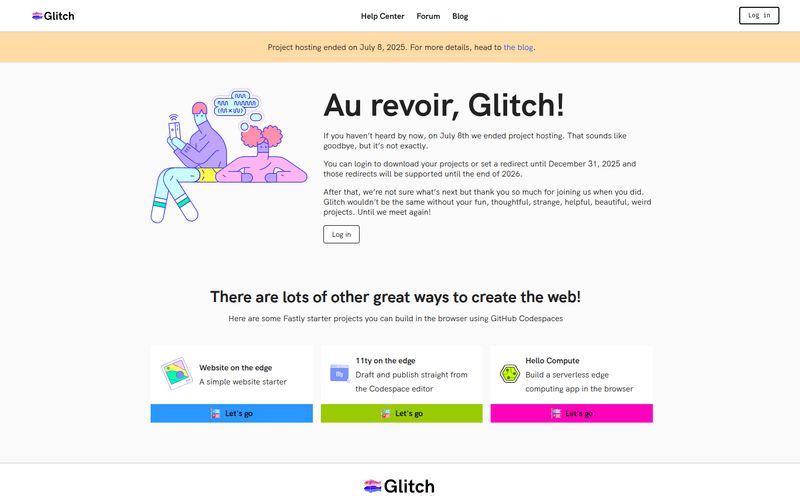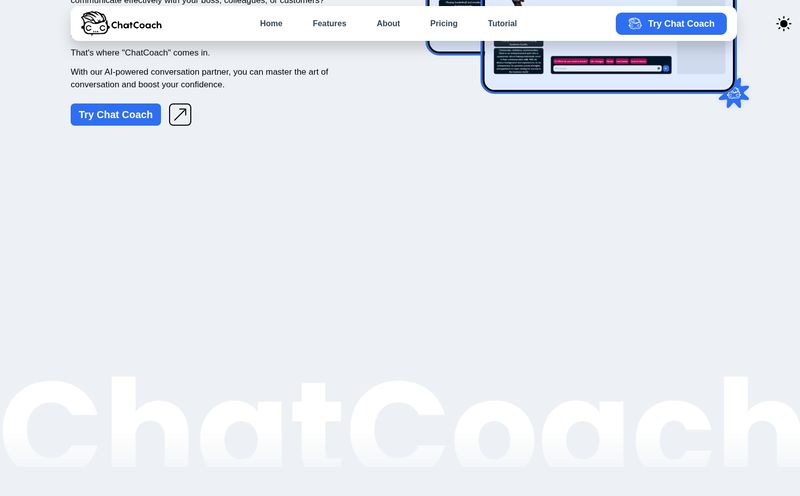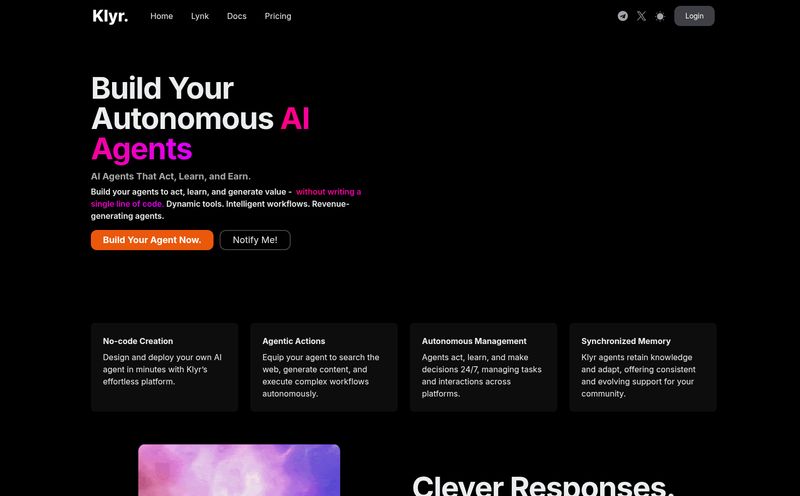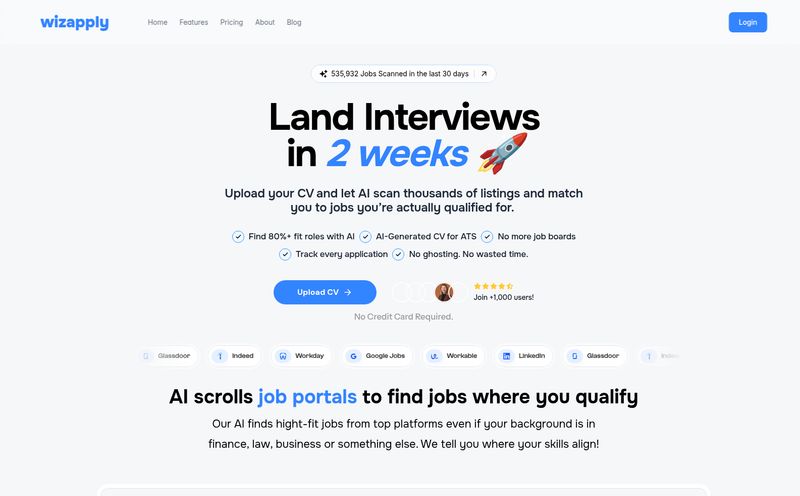I’ve lost count of how many times I’ve landed on a website, typed a perfectly reasonable query into the search bar, and been served a page of complete and utter nonsense. You know the feeling. You search for "blue running shoes size 10" and get back a yellow raincoat and a blog post from 2012 about hiking socks. It’s maddening. For years, site search has been the neglected child of the user experience family.
But that’s changing. Fast. With all the chatter about AI and Large Language Models (LLMs), a new breed of tools is emerging. Tools that don't just match keywords but actually understand intent. That's where I stumbled upon Trieve. The name popped up on my radar, and their promise of being an “Everything Platform for AI” definitely got my attention. It claims to be an all-in-one solution for search, discovery, and the new industry darling, RAG (Retrieval-Augmented Generation).
So, is it just another platform hopping on the AI bandwagon, or is there something more substantial under the hood? I decided to take a closer look.
So What Exactly is Trieve? Beyond the Buzzwords
Okay, let's cut through the marketing speak. At its core, Trieve is a toolkit for developers and companies to build seriously smart search experiences. Think of your standard website search bar as a librarian who can only check the index cards. They can match the letters in your request to the letters on the card, but that's it. Trieve, on the other hand, is like giving that librarian a brain. It’s a personal librarian who understands context, learns your preferences, and can even have a conversation with you to find what you really need.
It’s designed to power everything from the search bar on an e-commerce site to complex, generative AI applications that can answer questions based on a company's internal documents. This is the whole idea behind RAG—giving an AI model access to specific, proprietary data so it doesn't just make stuff up. Pretty neat, right?
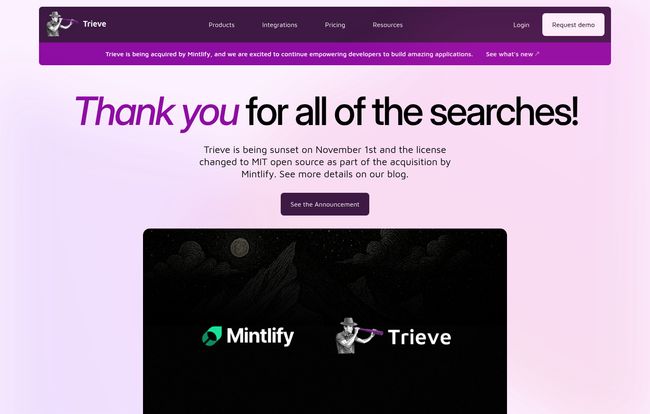
Visit Trieve
The Core Features That Actually Matter
A platform is only as good as its features, and Trieve comes with a full garage of tools. It’s not just one thing, but a collection of components that work together. Here's what stood out to me.
More Than Just a Search Bar
They call it "State-of-the-Art Search," and from what I can see, it's not just fluff. The goal here is to move past simple keyword matching. Trieve’s search is built to grasp the nuance and intent behind a query. It's the difference between searching for "pants with lots of pockets" and the system knowing you probably mean cargo pants, even if you didn't use that exact word. For any online store, improving that one interaction can be a game-changer for conversions.
Let's Have a Conversation
The Conversational AI feature is what powers those slick, modern chatbots. Not the dumb ones that get stuck in a loop if you misspell a word. These are AI-powered assistants that can guide users, answer complex questions, and deliver a genuinely helpful experience. It’s about making the interaction feel less robotic and more, well, human.
It Knows What You Want Next
Dynamic Recommendations are huge. This is Trieve’s engine for AI personalization. It analyzes user behavior to suggest relevant products, articles, or content. We've all seen this on Amazon or Netflix, and when it's done right, it feels like magic. When it's done wrong, it's just annoying. Trieve gives companies the controls to fine-tune this engine, so the recommendations actually make sense and drive engagement, not eye-rolls.
For the Devs: An 'Athletic' API
I got a little chuckle out of them calling their API "Athletic." It's a fun marketing choice, but it speaks to their audience. This platform is unapologetically for builders. They provide a comprehensive API and documentation so that development teams can wire Trieve into their existing products. They're not trying to hide the complexity; they're giving developers the keys to the car. This is where the real customization happens.
The Numbers Game: Comprehensive Analytics
Here’s something I appreciate as an SEO and data nerd: built-in analytics. You can’t improve what you don’t measure. Trieve provides detailed data on what users are searching for, what they're finding (or not finding), and how they're interacting with the search results. This feedback loop is gold. It lets you continuously tune the search quality and better understand your customers' needs.
Who is This Really For? (And Who It Isn't)
Let's be clear: Trieve is not a simple, plug-and-play WordPress plugin. If you’re a solo blogger looking for a slightly better search bar, this is probably overkill. You could make it work, sure, but it's like using a sledgehammer to hang a picture frame.
This platform is aimed squarely at businesses with development resources. Think established e-commerce brands, SaaS companies, or enterprises that need to build a sophisticated discovery experience. One of the cons I noted is that it 'may require technical expertise', and I think that’s a fair assessment. This is a tool for product managers and engineers who want to build something custom and are willing to get their hands a little dirty with an API.
I was impressed by the quote from BillTrack50:
"Trieve has been more than a vendor to us; they've been a true partner... For any company looking to add AI features into their product, I'd give Trieve a strong recommendation."
That kind of testimonial tells you a lot about their target customer and the level of partnership they offer.
Let's Talk Money: Trieve's Pricing Model
Ah, the pricing page. The moment of truth for any new tool. Trieve goes with a "Usage-based pricing" model. And, well, they don't list any specific numbers on their site. Instead, you're prompted to book a demo or contact them if you're in e-commerce.
I have mixed feelings about this. On one hand, usage-based pricing can be great. It means you can start small and the cost scales with your growth. You're not locked into a high-tier plan you dont fully need. On the other hand, it can create budget anxiety. The lack of transparent tiers makes it hard to estimate costs without having a full sales conversation. It’s a common strategy for B2B tools, but one that I, as a potential user, always find a little bit frustrating.
Security, Compliance, and Self-Hosting: The Grown-Up Stuff
Now this is where Trieve really stands out for serious businesses. The platform is SOC2 Type 2 and HIPAA compliant. These aren’t just fancy badges; they are rigorous, third-party audited standards for security and data privacy. For any company in healthcare, finance, or any other regulated industry, this is non-negotiable.
Even better? They offer a self-hostable option using Terraform. This is huge. It means companies with extremely sensitive data or strict data residency rules can run the entire Trieve infrastructure on their own servers. You get all the benefits of teh platform without your data ever leaving your control. For privacy advocates and corporate security officers, this is a massive green flag.
The Mintify Acquisition: What's Next?
A banner at the top of Trieve's site announces that they've been acquired by Mintify. Whenever an acquisition happens, there's always a moment of uncertainty for existing and potential customers. Will they kill the product? Will the vision change? Trieve's message seems to preempt these fears, stating they are "excited to continue empowering developers to build amazing applications." This suggests it's a strategic acquisition aimed at growth, not dissolution. It will be interesting to see how Mintify's resources shape Trieve's future.
So, Should You Give Trieve a Go?
After digging in, I'm genuinely intrigued by Trieve. It’s not trying to be a one-click-magic solution for everyone. It knows its audience: developers and product-focused companies that want to build a truly exceptional search and discovery experience. It’s a box of high-quality LEGOs, not a pre-built model car.
If you're frustrated with your current site search, if you're looking to build a recommendation engine that actually works, or if you're experimenting with RAG applications, then yes. Trieve is absolutely worth a serious look. The combination of a flexible API, strong security credentials, and the self-hosting option makes it a very compelling package for the right team.
It’s not for the faint of heart, and you'll need some technical chops to make it sing. But for those ready to move beyond basic search, Trieve might just be the partner you're looking for.
Your Trieve Questions, Answered
What is Trieve used for?
Trieve is an AI platform for building advanced applications for search, discovery, and recommendations. It's often used by e-commerce sites, SaaS companies, and enterprises to create better user experiences, from smart search bars and chatbots to personalized content suggestions.
Is Trieve difficult to use?
It depends on your background. For a developer or a technical team, Trieve provides a well-documented API that should be straightforward to integrate. For a non-technical user, it would be challenging. It's a developer-first tool, not a simple no-code plugin.
How does Trieve's pricing work?
Trieve uses a usage-based pricing model, which means the cost scales with how much you use the service (e.g., number of searches or API calls). They don't publish specific pricing tiers online; you need to contact their sales team or book a demo to get a custom quote.
Can I host Trieve myself?
Yes, one of Trieve's major features is its self-hostable option. Using Terraform, you can deploy the entire platform on your own cloud infrastructure, giving you full control over your data and environment.
Is Trieve secure for enterprise use?
Absolutely. Trieve is SOC2 Type 2 and HIPAA compliant, which are high standards for data security and privacy. This, combined with the self-hosting option, makes it a very suitable choice for enterprises with strict security requirements.
What is RAG and how does Trieve use it?
RAG stands for Retrieval-Augmented Generation. It's a technique where an AI model's knowledge is supplemented with information retrieved from a specific database. Trieve provides the 'Retrieval' part of this equation, allowing you to build generative AI apps (like a customer support bot) that can pull answers from your company's own documents, ensuring accurate and relevant responses.
Reference and Sources
- Trieve Official Website
- Terraform by HashiCorp
- BillTrack50 Case Study (as referenced on the Trieve homepage)
